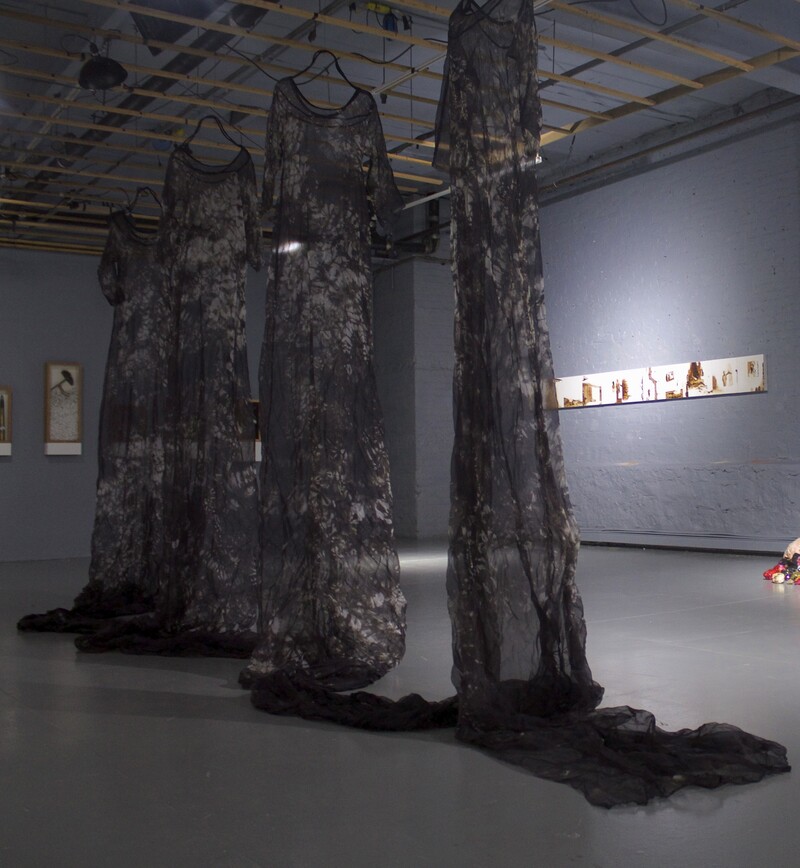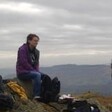Arts and Culture 27 April 2015

“Casualties” — fabric art by Mary Tuma.
Five Myles GalleryFive artists of Arab origin feature in the exhibition Artistic Weapons of Mass Communication at Brooklyn’s Five Myles Gallery.
Running until 24 May, the show includes the work of Palestinian American artists Mary Tuma, John Halaka and Rajie Cook, as well as Arab Iranian Samira Abbassy and Egyptian Ganzeer.
Curator Souhad Rafey has said: “With the Middle East in focus, the show reflects opposition to wars of aggression, military occupations of foreign lands and the necessary change to the destructive reality of ‘empire as a way of life.’”
John Halaka’s work, which uses complex drawings full of light and shade, has been widely shown across Europe and North America in recent years. In the photographic-based works on offer here, he “puts a human face on the abstract notion of the displaced masses, making the experiences of the refugees more real, comprehensible and unforgettable,” according to Rafey.
Mary Tuma’s fabric-based works, which grew out of her training in sewing and weaving, focus on a sense of loss and displacement which, she has stated, is present in much of her work.
Tuma has said of works similar to those in the Brooklyn show that “An empty dress implies absence and for me, once the dress is sheer it begins to be like a memory or a shadow…”
The gallery’s website highlights how her “use of old fabrics and found objects is important in creating a work or environment that evokes a feeling of loss, or distant memory. She is interested in the sorting of images from the past, images that are like shadows or ghosts, something not quite whole and no longer real but still of great influence and power.”
And Rajie Cook’s contribution to the show consists of “intricate miniature silent theaters, small boxes attached to the wall, that convey his feelings about the tragic situation in the Middle East.”
One such box resembles a fire extinguisher. With “Gaza” written on its side, the box’s interior is stuffed with dolls’ heads.
Cook insists that “I take pride in who I am and where my roots are. As a Palestinian American artist I feel strongly, as any artist would, about expressing my feelings and experiences relating to human rights … justice and freedom … living and dying … about hurting … about pride.”

Detail from “On Message” by Samira Abbassy (12x12” gesso panels).
Five Myles GalleryAlongside Tuma, Cook and Halaka, the presence of Egyptian artist Ganzeer — who describes his work as “concept pop” — and Arab Iranian Samira Abbassy emphasize the links between Palestine and the wider Middle East.
Ganzeer’s focus on social justice is articulated through thoroughly modern media such as graphic design and video. In this show, he takes the work of veteran Egyptian resistance poet Ahmed Fuad Negm and “repackages” it as a music video, bringing it up to date while maintaining the poet’s fighting spirit.
Samira Abbassy, like Ganzeer, plays with time, but over a much longer scale in order to depict the realities of violence. Her painting style references most directly the miniature art of classical Persia but also the dark masterpieces of Goya.
Although the images of her tale come from a 15th century manuscript of the great Persian epic poem The Shahnameh, or Book of Kings, Souhad Rafey’s curatorial notes describe how “there is a sense of timelessness and the repetitive cycles of history: war, genocide, ethnic cleansing, occupation and exile.” Abbassy has addressed how much of what passes history distorts the truth, given how it usually reflects a victor’s viewpoint.





